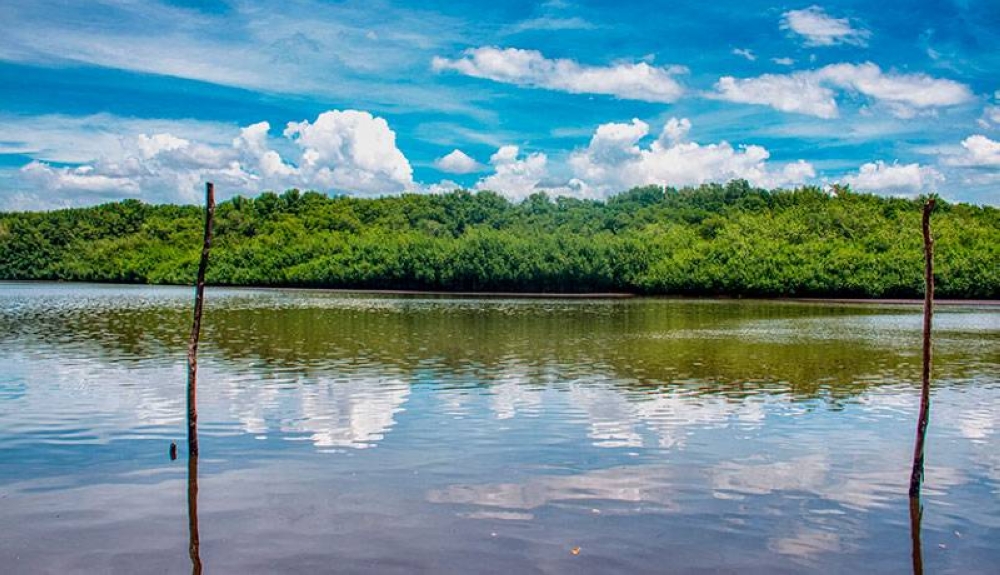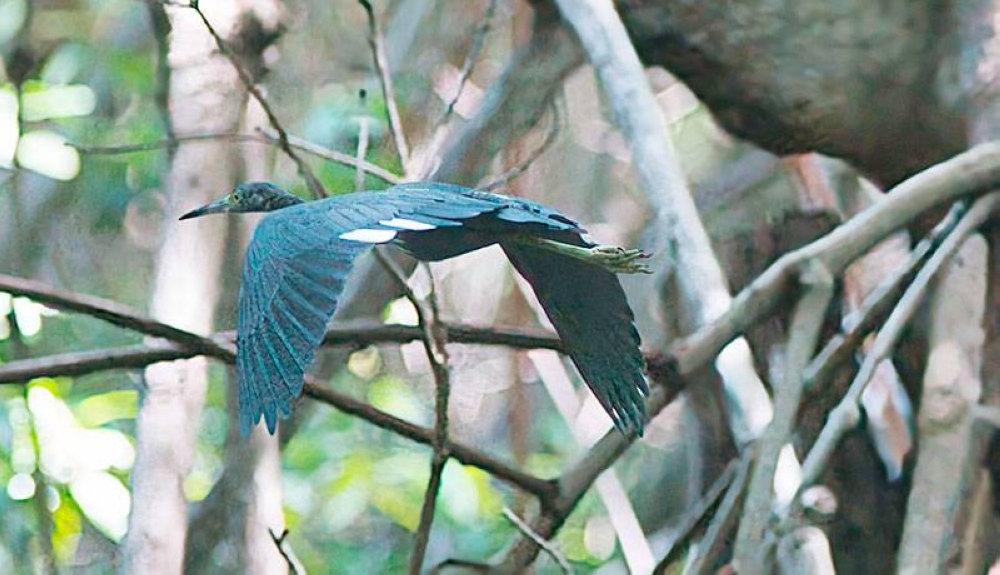
Zenaida Salt swirls the black earth with both hands. On one side there are some bonfires to ward off the mosquitoes that never rest in the hot midday sun. Salt and her colleagues are working on preparing small plastic pots to later plant mangrove seeds. “I like nature. I like reforestation,” she said with a smile as the woman wiped the sweat from her forehead.
Originally from La Union, about 300 kilometers from her current home, she joined the Barra de Santiago Women’s Community Development Association (AMBAS) seven years ago. AMBAS is one of her local partners of Da Vivienda Bank, with whom she works on forest rescue and reforestation. Mangrove forest in Barra de Santiago, Ahuachapan.
Founded in 2000 by Rosa Aguilar, AMBAS is dedicated to turtle breeding and wetland restoration, one of seven sites listed under the Ramsar Convention by the Ministry of Environment and Natural Resources (MARN). Masu.
“It’s already been a big help to us,” added Priscilla Ochoa, who also prepares bags of dirt along with Salt. Ochoa, a single mother of a 13-year-old teenager, cleans coastal land and does laundry to support her home when she’s not working on projects, but she dedicates her time to forest restoration work. He says he likes it better.
“What I like is that when I get paid, I buy a few things I need at home,” Salt added in a modest voice.

La Barra de Santiago is a nature reserve of over 11,500 hectares containing mangrove forests. / Francisco Valle
biological lungs.
Ramsar Sites are wetlands with high biodiversity and are home to several species of flora and fauna, some of which are on the verge of extinction. These areas act as sinks for carbon dioxide, one of the most climate-changing compounds that humans emit into the atmosphere.
La Barra de Santiago is also an economic corridor for artisanal fishing, which is the main subsistence activity of its residents. But when it’s banned, everything comes to a standstill. “If we’re part of this project, we don’t worry too much because we know that if they pay us, we’ll buy the product,” Salt added.
The salt forest was destroyed by a storm in 1980, and then residents built access to the coast, which damaged the site’s hydrology and stopped the mangroves from growing, said Luis Quintanilla, AMBAS biological officer. explained.
This led to the expansion of a shrub known as “devil’s rib.” “It covered the entire land and meant there was no space for animals to roam, so the first remediation measure was to eliminate it,” he added.
La Barra de Santiago has 80 hectares of mangroves, of which 25 hectares do not regenerate naturally and require human intervention.

Mangroves are not only a source of income for fishermen, but also a habitat for wildlife. / Francisco Valle
Alliance with “life”.
Davivienda Seguros exclusively holds the Green Life Insurance Policy and became a permanent partner of both five years ago.
The partnership is made up of insurance companies that are part of the holding company of El Salvador’s fourth-largest bank, and will use 1% of insurance proceeds to finance restoration projects. To date, 6.2 hectares of mangrove forest have been intervened.
The financial company estimates that more than 17,000 mangrove trees have been planted. This equates to 1,232.8 tons of polluted gas, providing economic benefits to 385 households in the area.
Seguro Vida Verde was born with an “environmental chip”. First, reforestation was supported in Zanjon El Chino, San Francisco Menéndez, Ahuachapan. Walter Tiro Deininger Park, La Libertad; and El Espino Eco Park. In 2010, they turned to salt forest restoration to “protect our ecosystem,” said Sabina Ayala, Davivienda’s sustainability coordinator.
The project is being worked in cooperation with the Foundation for Social Action and Business (Fundemas), and in 2020 the German Agency for Development Cooperation (GIZ) joined through the Biodiversity and Business Programme, supporting the implementation of the activities and measuring the results. I am.
Crabs, shrimp, fish, and crocodiles are part of the mangrove ecosystem, and the association also uses hidden cameras to show that mangrove forests are home to at-risk species such as crocodiles, zontos cats, herons, and otters. It is recorded.

Up to 4,000 mangrove trees are planted on each hectare, with an average cost of $1.50 per tree, detailed Luis Quintanilla of AMBAS. / Francisco Valle
Ramsar wetland, first living barrier
These sites act as wind barriers and contribute more to carbon sequestration than continental forests.
1.- How many pieces are there?
MARN declared seven: El Jocotal Lagoon, Jiquilisco Bay, Cerrón Grande Reservoir, Oromega Lagoon, Guija, Jaltepeque, and the Barra de Santiago complex.
2.- Mangrove.
The limit that determines the mangrove ecosystem is the tides, or how far the ocean reaches. Barra de Santiago has 80 hectares of forest.
3.- Wild animals
These are areas that are home to a wide variety of flora and fauna. Both agencies have documented that species such as crocodiles, zont cats, herons and river otters are at risk.
4.- Income
Mangroves are a fishing ground and the main source of income for Barra de Santiago. With Davivienda’s support, 60 jobs have been created since 2020, especially for women.
Source: Diario.Elmundo